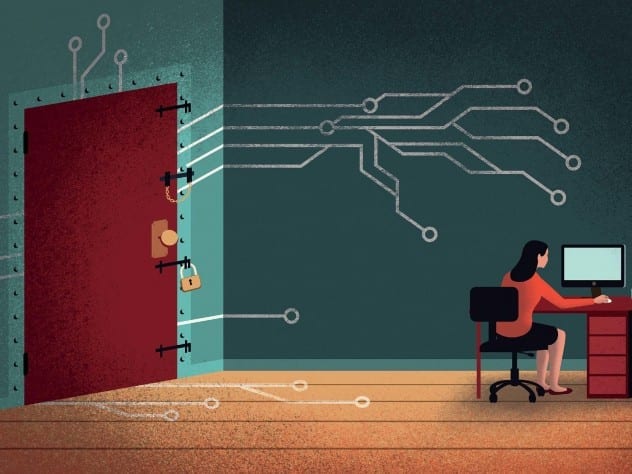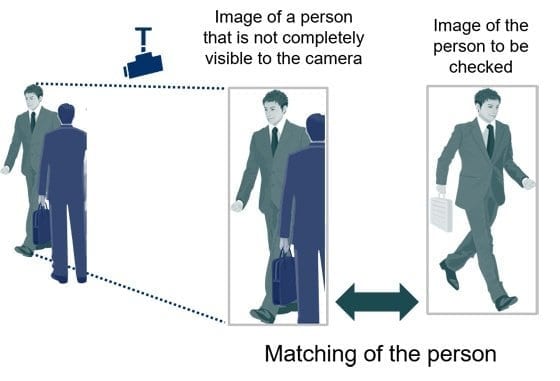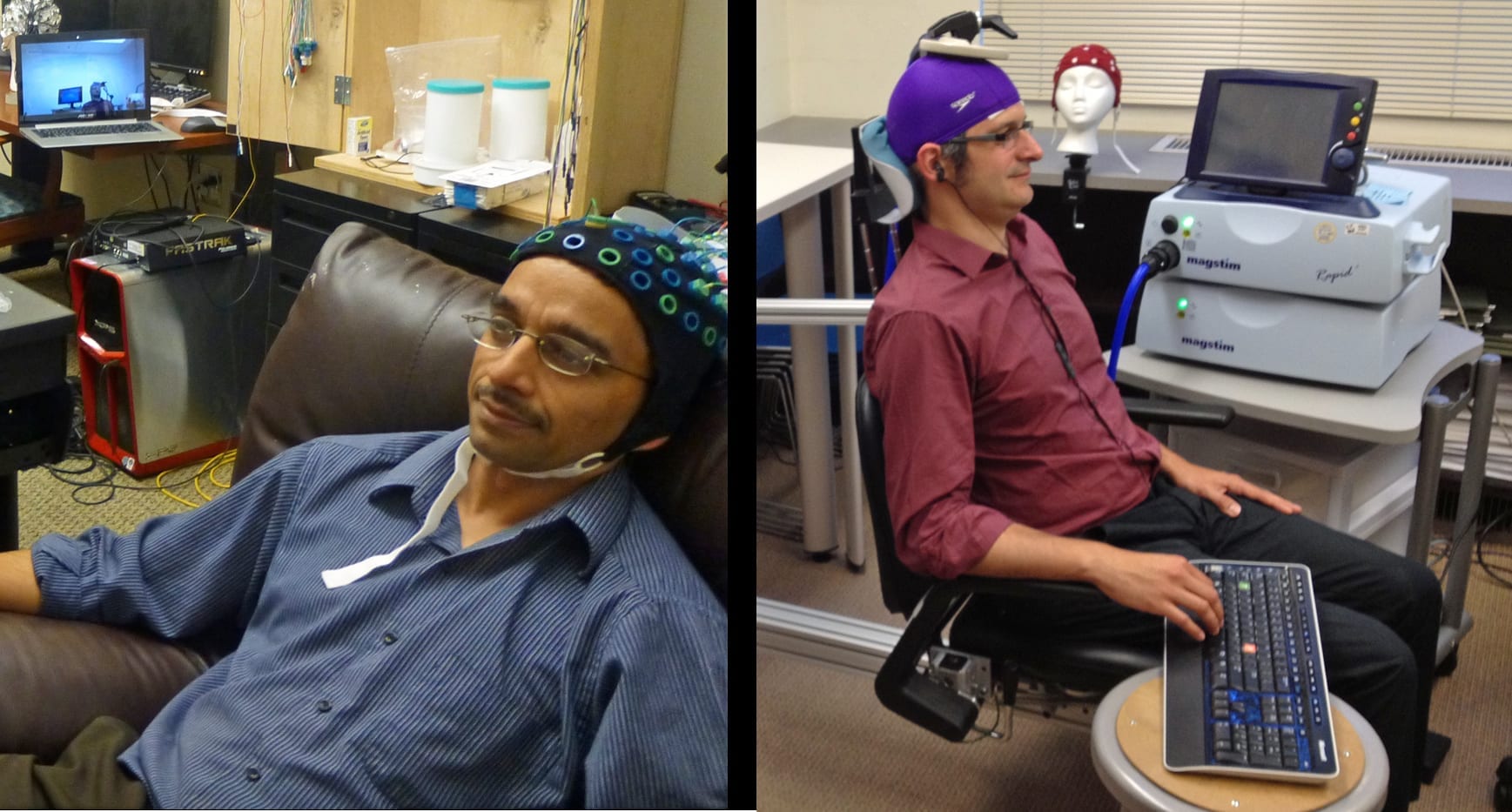
Surveillance is certainly much in the news lately.
Most notably, of course, there is the continuing outcry over the National Security Agency’s call-tracking program, disclosed in the documents leaked by Edward Snowden.
But surveillance even surfaced as a subject in last week’s televised debate among the Democratic candidates for mayor in New York. The office seekers were asked whether New York City should have more surveillance cameras. Six of the seven, card-carrying liberals all, replied without hesitation, yes. (Only Anthony Weiner said no.)
Most of the public discussion of surveillance technology and its use revolves around the question: Is it spooky or reassuring?
But another issue is the effect of surveillance on behavior. And a new research paper, published on Saturday, shows in detail how significant the surveillance effect can be.
The paper, “Cleaning House: The Impact of Information Technology Monitoring on Employee Theft and Productivity,” is the work of three academics: Lamar Pierce, an associate professor at the Olin Business School at Washington University in St. Louis; Daniel Snow, an associate professor at the Marriott School at Brigham Young University; and Andrew McAfee, a research scientist at the Sloan School of Management at the Massachusetts Institute of Technology.
The researchers measured the impact of software that monitors employee-level theft and sales transactions, before and after the technology was installed, at 392 restaurants in 39 states. The restaurants were in five “casual dining” chains. The paper does not name the five, but it cites examples of the casual dining category including Applebee’s, Chili’s and Olive Garden.
Employee theft and fraud is a big problem, estimated at up to $200 billion a year across the economy. In the restaurant industry, analysts estimate the losses from employee theft at 1 percent of revenue. That does not seem like a lot, but restaurant profit margins are slender, typically 2 to 5 percent. So cutting down on theft can be an important contributor to a restaurant’s financial health.
Most of the restaurant industry pays its servers low wages and they depend on tips. Employee turnover is high. In that environment, a certain amount of theft has long been regarded as a normal part of the business.
Unethical behavior runs the gamut. There is even a how-to book on the subject, published in 2004, “How To Burn Down the House: The Infamous Waiter and Bartender’s Scam Bible by Two Bourbon Street Waiters.” A simple example is a bartender’s not charging for a round of drinks, and urging the customers to “take care of me” — with a large tip. Other tactics are more elaborate.
But monitoring software is now available to track all transactions and detect suspicious patterns.
The Latest Bing News on:
Surveillance Changes Behavior
- Here's how the TikTok ban will likely play out in the courtson April 27, 2024 at 2:00 am
"This unconstitutional law is a TikTok ban, and we will challenge it in court," TikTok stated after Biden signed the bill. "We believe the facts and the law are clearly on our side, and we will ...
- Chronic wasting disease detected in Edwards County deer breeding facilityon April 25, 2024 at 5:01 pm
AUSTIN — Texas Parks and Wildlife Department (TPWD) and Texas Animal Health Commission (TAHC) received confirmation of two cases of chronic wasting disease (CWD) in an Edwards County deer breeding ...
- Early analysis finds eclipse had noticeable effect on birdson April 23, 2024 at 1:08 pm
Early results from a study of the April 8 total solar eclipse show a more noticeable effect on bird behavior than during the last eclipse.
- Data Privacy And The Contested Extension Of FISA, Section 702on April 23, 2024 at 12:37 pm
It’s official: the executive branch has signed into law the bill that reauthorizes the warrantless surveillance power ... user information such as search behavior, clicks, purchases, site ...
- Biden signs bill extending a key US surveillance program after divisions nearly forced it to lapseon April 20, 2024 at 11:45 am
President Joe Biden has signed legislation reauthorizing a key U.S. surveillance law after divisions over whether the FBI should be restricted from using the program to search for Americans’ ...
- US Senate votes to reauthorize controversial surveillance law with changeson April 20, 2024 at 4:22 am
The US Senate voted 60–34 early Saturday to reauthorize and amend controversial intelligence legislation known as Section 702 of the Foreign Intelligence Surveillance Act ... Despite the changes, five ...
- Senate Passes Two-Year Extension of Surveillance Law Just After It Expiredon April 19, 2024 at 4:59 pm
The law lapsed only briefly after a late-night deal that allowed votes on privacy advocates’ proposed changes ... an extension of a warrantless surveillance law, moving to renew it shortly ...
- Senate Advances Renewal of Key US Surveillance Program as Detractors Seek Changeson April 18, 2024 at 10:26 am
Senate Advances Renewal of Key US Surveillance Program as Detractors Seek Changes WASHINGTON (AP) — The Senate advanced legislation Thursday that would reauthorize a key U.S. surveillance tool ...
- Senate advances renewal of key US surveillance program as detractors seek changeson April 17, 2024 at 5:00 pm
WASHINGTON (AP) — The Senate advanced legislation Thursday that would reauthorize a key U.S. surveillance tool as ... lawmakers agitating for further changes. It’s a dynamic that could ...
- AI was supposed to make police bodycams better. What happened?on April 16, 2024 at 2:00 am
New AI programs that analyze bodycam recordings promise more transparency but are doing little to change culture.
The Latest Google Headlines on:
Surveillance Changes Behavior
[google_news title=”” keyword=”Surveillance Changes Behavior” num_posts=”10″ blurb_length=”0″ show_thumb=”left”]
The Latest Bing News on:
Surveillance
- Perimeter Improvement District spends $173,000 to install area surveillance systemon April 27, 2024 at 10:00 am
The DeKalb Perimeter Community Improvement District has committed $173,350 in funds for a two-year public safety technology partnership with the Dunwoody Police Department, which includes installing a ...
- Christine Quinn claims estranged husband placed quarter-sized hidden cameras in home to keep her ‘under surveillance’on April 26, 2024 at 5:55 pm
The former Netflix star also accused her estranged husband of “trashing” their home so it was unsuitable for living.
- Surveillance video shows David Tepper's visit to local bar with sign critical of himon April 26, 2024 at 5:18 pm
Panthers owner David Tepper paid a surprise visit to a local bar on Thursday night. Recently obtained security footage shows what went down.
- Christine Quinn Claims Husband Placed Hidden Cameras the ‘Size of Quarters’ in Their Home to Keep Her ‘Under Surveillance’on April 26, 2024 at 3:59 pm
In a new filing obtained by PEOPLE, the reality star accuses her estranged husband Christian Dumontet of monitoring her without her “knowledge or consent” ...
- FOX 17 obtains surveillance video showing unmarked police car hit man running from arreston April 26, 2024 at 3:00 pm
Civil rights attorney Ben Crump shared surveillance video with FOX 17 Friday showing the moment an unmarked police cruiser hit 25-year-old Samuel Sterling in Kentwood.
- St. Paul stranger-rape charge: Residential surveillance video helped lead to Maplewood suspecton April 26, 2024 at 10:35 am
A St. Paul woman feared she was going to die when a stranger broke into her home, held a gun to her head and sexually assaulted her, according to charges filed Friday. Police reviewed residential ...
- Police: Video surveillance, DNA used to link man to 2019 Hanover home invasion, shootingon April 25, 2024 at 1:52 pm
A Maryland man faces attempted murder and other charges from a 2019 home invasion robbery and shooting in York County. Eric Morton, 36, also faces charges that include felony counts of robbery, ...
- Cellphone, surveillance video sought as MSP investigates deputy’s fatal shooting of suspecton April 25, 2024 at 10:00 am
Police urge anyone with cellphone or home surveillance video of the incident to contact Detective Sgt. Willoughby at 810-965-4408.
- Surveillance video shows brazen theft in broad daylighton April 24, 2024 at 9:22 pm
An Albuquerque homeowner says a thief made off with a welder, the trailer it was on, and a large toolbox with several tools inside.
- Local law enforcement surveillance policy in question amid expansion of federal intelligence programon April 24, 2024 at 6:36 pm
The renewal of a contentious federal surveillance program made national headlines this week, but some experts argue surveillance on the local level deserves similar attention.
The Latest Google Headlines on:
Surveillance
[google_news title=”” keyword=”surveillance” num_posts=”10″ blurb_length=”0″ show_thumb=”left”]










